Her previous project had students trace a photo of a mission. This created a class full of almost identical images. I suggested a 'viewfinder' approach. A viewfinder is a rectangular opening in a piece of cardboard that allows the artist to crop or reframe the scene-zooming into one area for artistic effect. Even if a whole class of students used the same original image, it is unlikely any two students will crop the new scene in exactly the same way. This process emphasizes the Creative Skills of "Envision-Imagine multiple possibilities" and "Create-Make something original" as well as "Engage-Make it yours". For a demo project, I cut a viewfinder from a piece of cardstock, but empty slide frames are ideal viewfinders. The demo project shown here is done in oil pastel with a watercolor wash, but any medium is suitable.
We're still brainstorming integration concepts for this project. For example, what if students not only used 'point of view' for creating the visual artwork, but also used 'point of view' when writing? How would poetry sound from the viewpoints of those affected by the California missions? How would the colors, mood and tone change in the artwork change when viewed from an Indigenous viewpoint as opposed to a Catholic missionary viewpoint? Could students collaborate to create a two-voice poem with separate artworks that represent each voice?
Step 1: Students use the viewfinder to find the scene they would like for their composition. Here concepts of symmetry and balance can be useful and natural discussions.

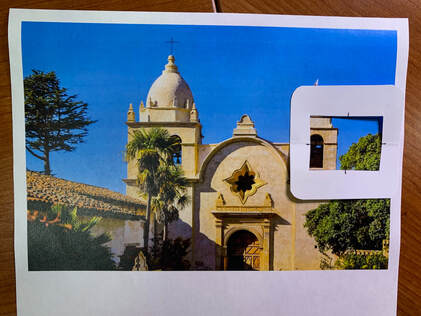
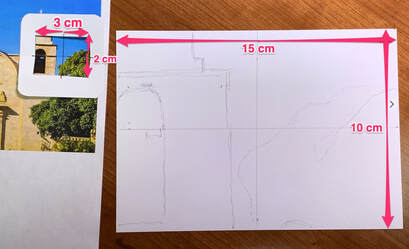
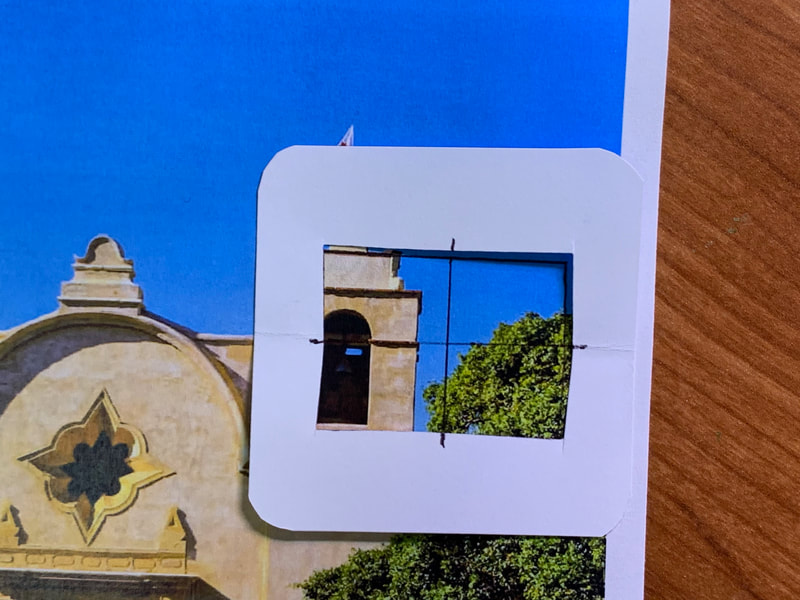
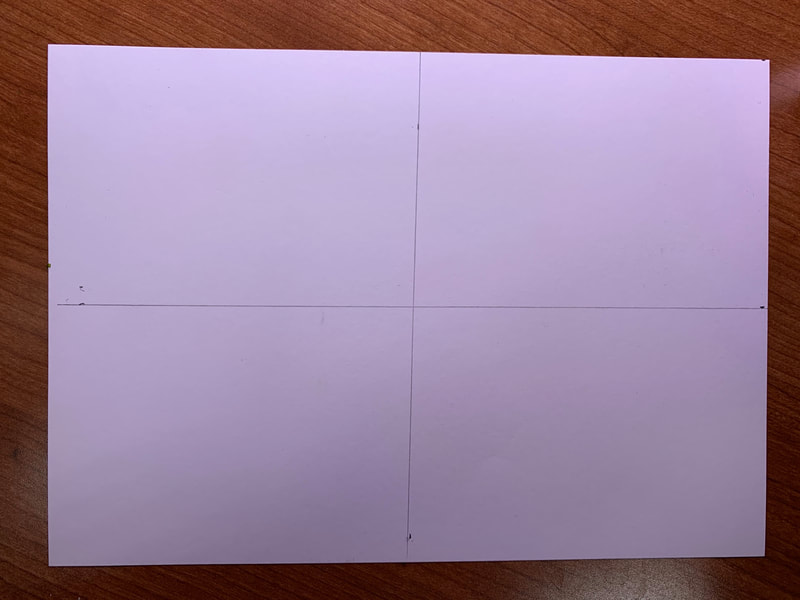
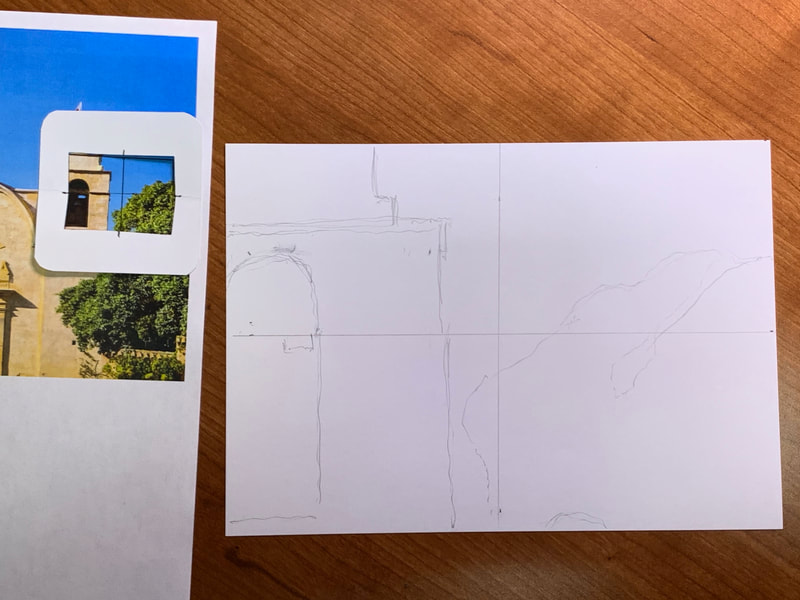
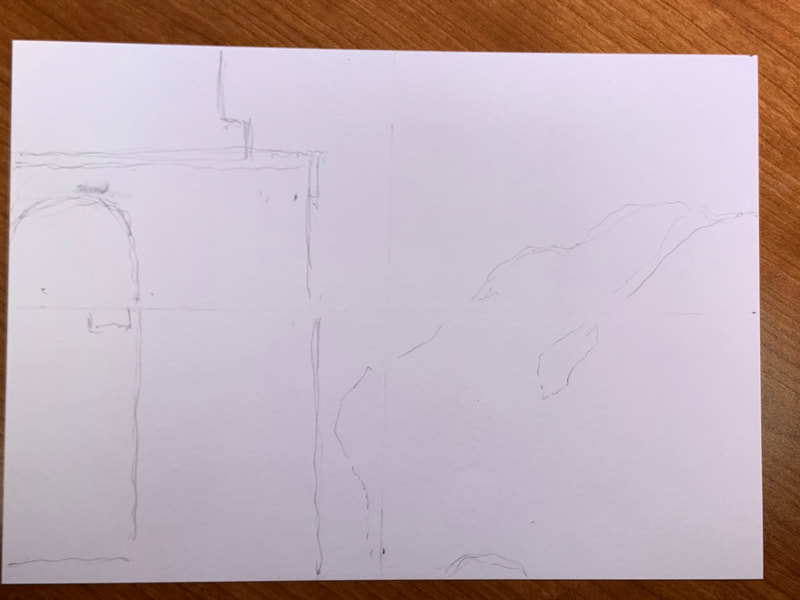
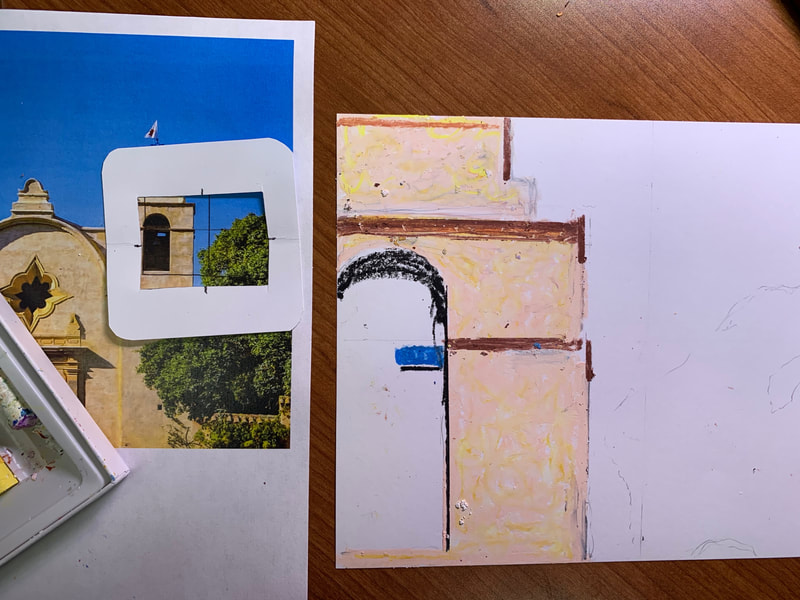
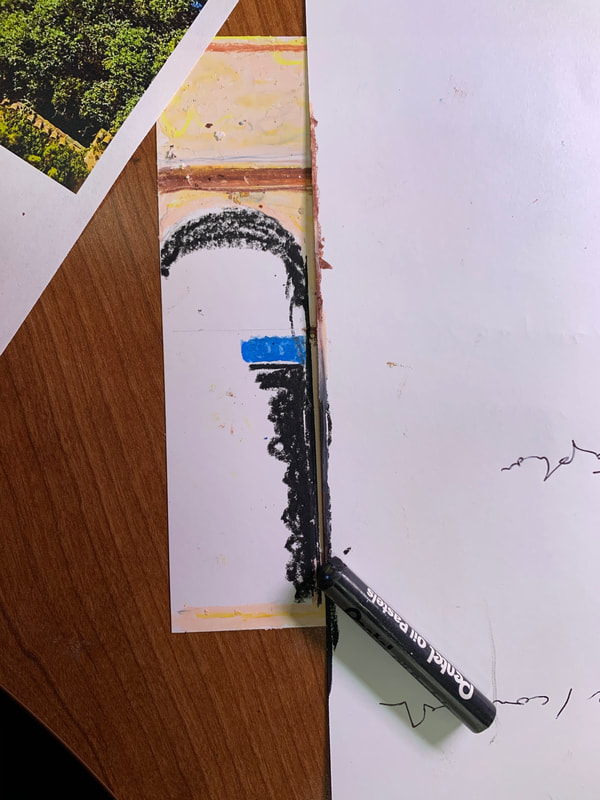
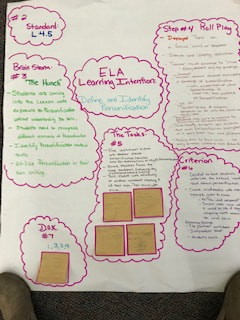
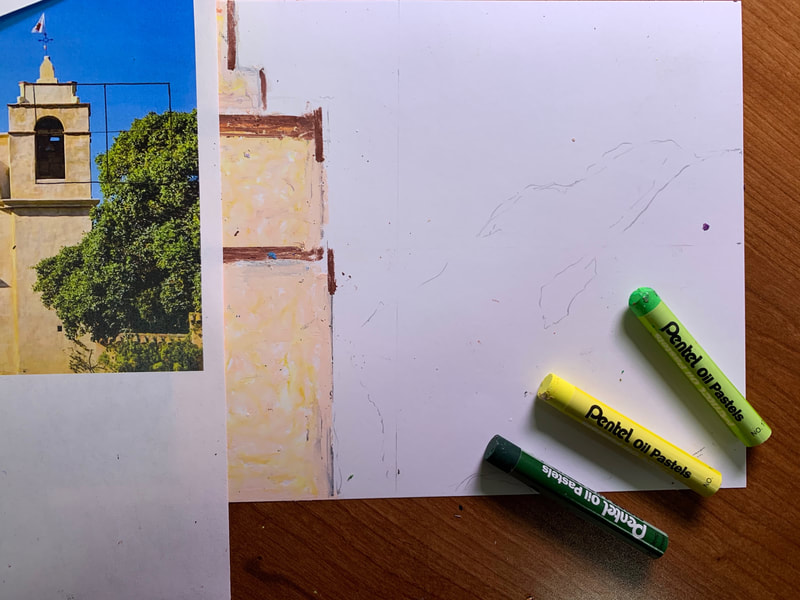
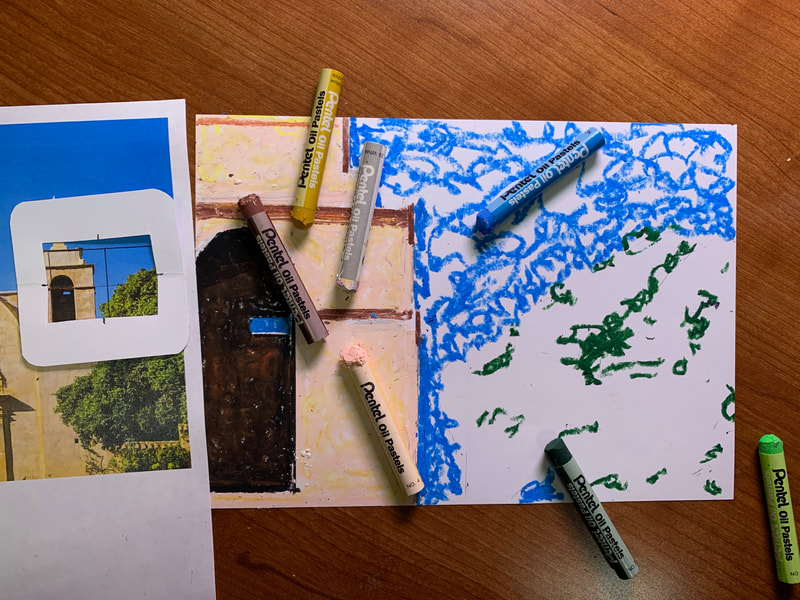
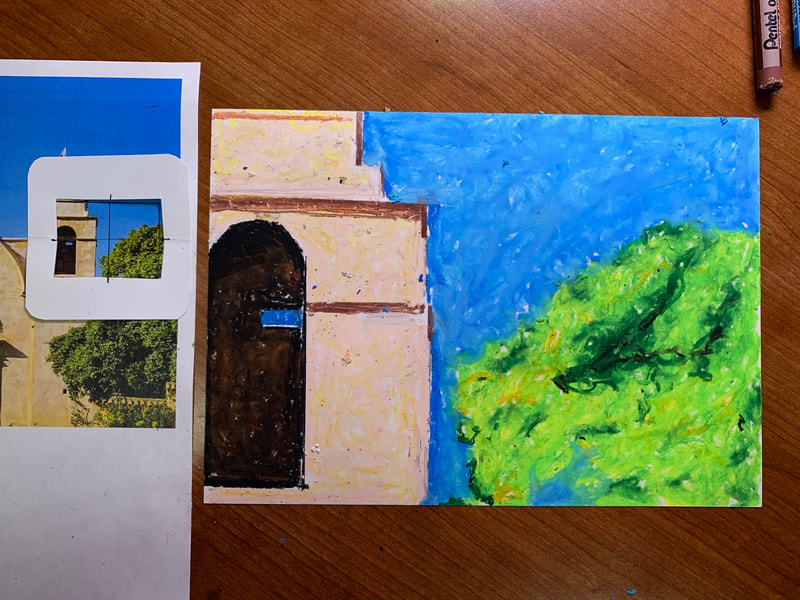
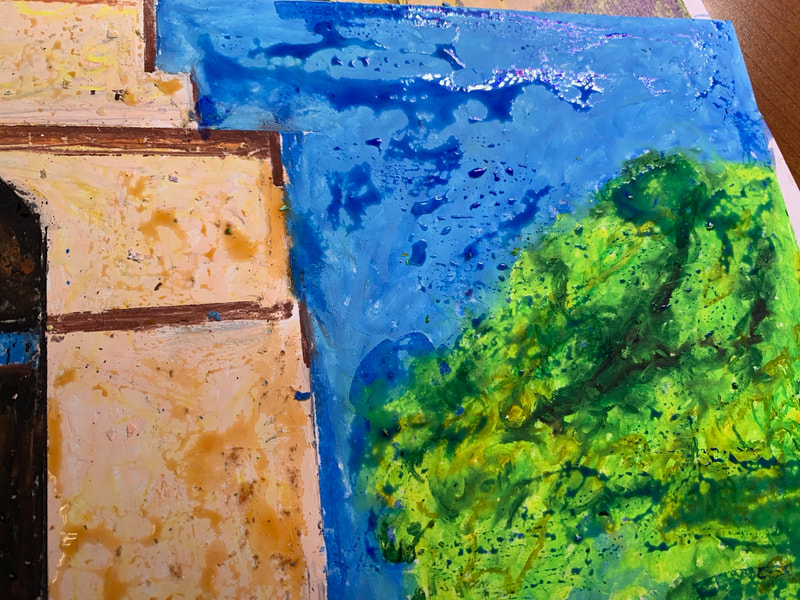
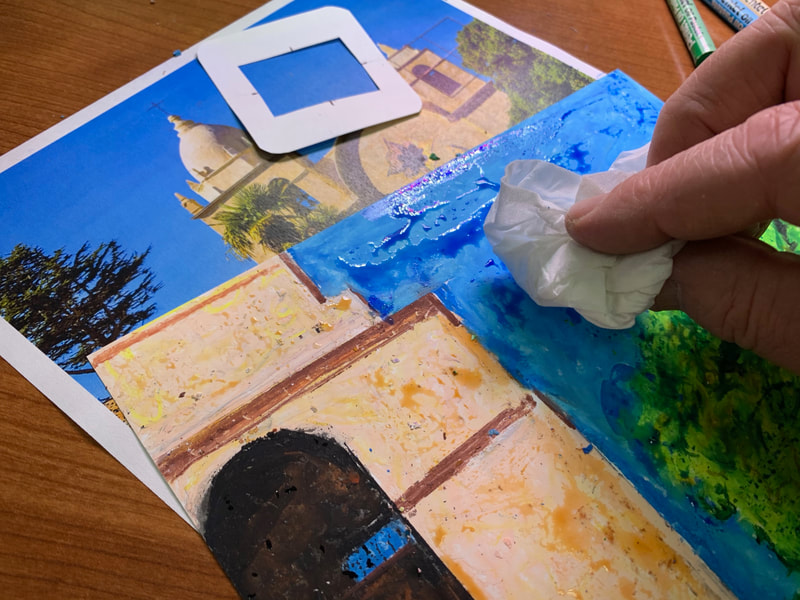
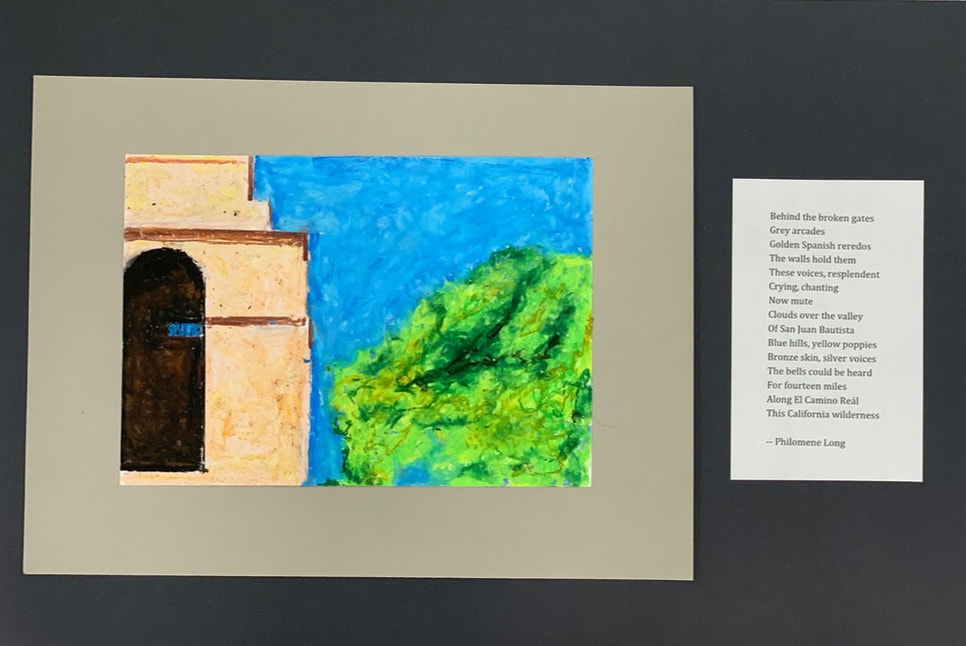
 RSS Feed
RSS Feed